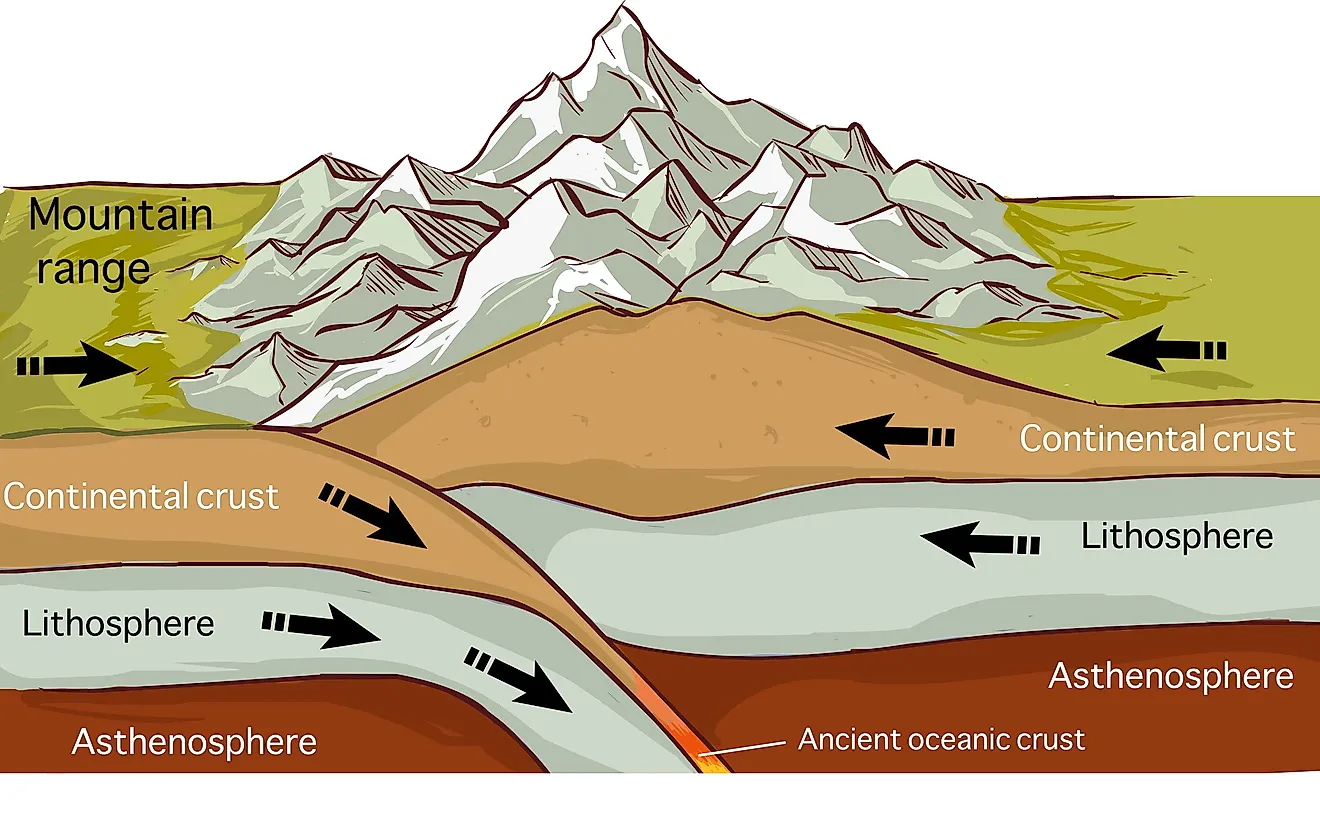What Causes Tectonic Plates To Move?

- Tectonic plates are 62 miles thick and are made up of the continental crust and the oceanic crust.
- Slab pull is the most relevant force that affects the movement of tectonic plates.
- Convection refers to specific cells within the Earth’s mantle that create heat. The heat makes the solid rocks move upwards while the colder rocks move downwards.
Tectonic plates are large pieces of the Earth’s crust and its topmost mantle. When viewed together, they form the lithosphere. These plates are 62 miles thick and are made up of two types of material. These materials are the continental crust and the oceanic crust. Their compositions differ greatly.
The oceanic crust consists of mafic basaltic rocks, while the continental crust is made up of lower-density felsic granitic rocks. Multiple theories try to explain why the tectonic plates are moving. According to the most recent research, the biggest driving force behind the movements is slab pull. However, we will take a look at all the possible explanations in this article.
The Three Forces
Researchers have proposed three main reasons why the tectonic plates are moving. All of these reasons boil down to various forces that are creating the movement. The first of the possible reasons is the mantle convection currents. These currents are warm, and they can carry and drive the tectonic plates that make up the lithosphere in a way that resembles a conveyor belt. The second reason often cited by researchers is the ridge push. The ridge push occurs at the resilient upwelling mantle at ridges placed on the mid-ocean level.
The newly formed plates placed at the oceanic ridges are still warm once they are formed, so their elevation is higher than colder, denser plate material that is placed further in the ridge. Gravity causes the higher plates to push away the lithosphere that is placed in the further parts of the ridge.
The third force that causes the tectonic plates to move is the slab pull. This force occurs when the older plates start to sink. As the plates age, they become colder, which makes them denser than the mantle beneath them. They start to sink and pull the warmer parts of the plate with them.
The Power Of Gravity
Out of all these three forces, researchers agree that the slab pull is the most relevant one. It is the biggest driving force behind all of the tectonic plate movement. However, the main force that is behind all of the previously mentioned forces is gravity itself. Gravity is the reason why all of these other forces are capable of moving the tectonic plates. To explain all of this more simply, once the plates meet each other, oceanic plates will dive beneath other plates and sink deeper into the mantle. We call this process subduction.
The rest of the tectonic plate gets dragged along with the oceanic lithosphere, and this causes the plates to move. Convection is another driving force behind the plate tectonics. Convection refers to specific cells that are present in the Earth’s mantle. These cells create heat, which makes the solid rocks move towards the crust, and the colder rocks move deeper towards the Earth’s core.
Sometimes, these hot rocks that move to the surface can cause the crust to weaken, and new rifts and ocean basins are created. These cells were actually the reason why supercontinents were broken up throughout our history.











